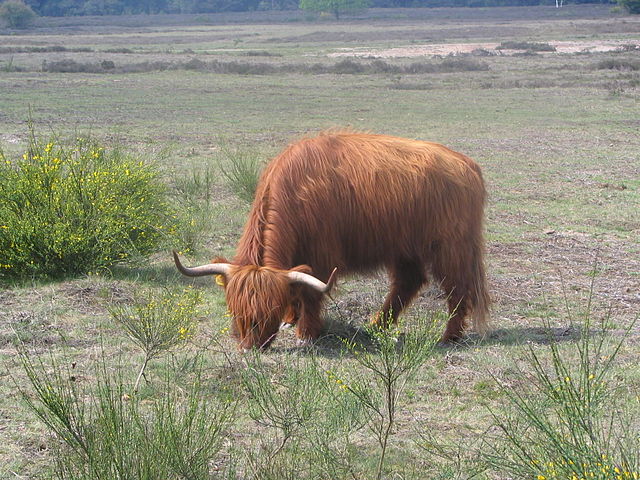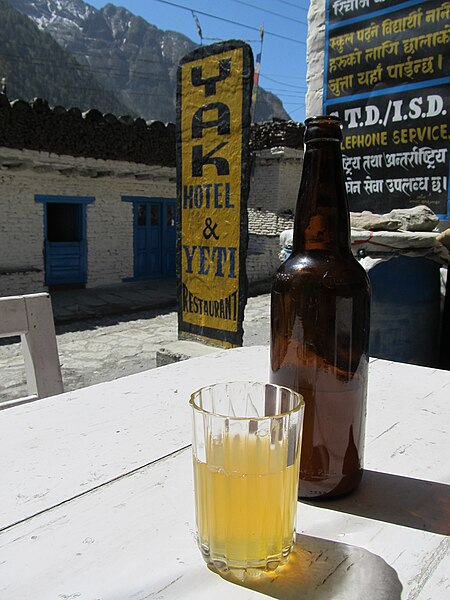Landscape-scale conservation
Landscape-scale conservation is a holistic approach to landscape management, aiming to reconcile the competing objectives of nature conservation and economic activities across a given landscape. Landscape-scale conservation may sometimes be attempted because of climate change. It can be seen as an alternative to site based conservation.
Landscape scale conservation attempts to reconcile competing pressures on the designated Areas of Outstanding Natural Beauty across the United Kingdom.
Bureau of Land Management using fire to maintain a landscape in Western Oregon
Highland cow helping to maintain the landscape near Hilversum in the Netherlands
The marketing of products from specific landscapes can assist conservation. This is apple juice from Tukuche village in the Kali Gandaki Gorge, Nepal
A landscape is the visible features of an area of land, its landforms, and how they integrate with natural or human-made features, often considered in terms of their aesthetic appeal. A landscape includes the physical elements of geophysically defined landforms such as mountains, hills, water bodies such as rivers, lakes, ponds and the sea, living elements of land cover including indigenous vegetation, human elements including different forms of land use, buildings, and structures, and transitory elements such as lighting and weather conditions. Combining both their physical origins and the cultural overlay of human presence, often created over millennia, landscapes reflect a living synthesis of people and place that is vital to local and national identity.
A prairie: Badlands National Park, South Dakota
Tropical rainforest, Fatu Hiva Island, Marquesas Islands, French Polynesia
Tundra in Siberia
Taiga (boreal forest), Alaska








